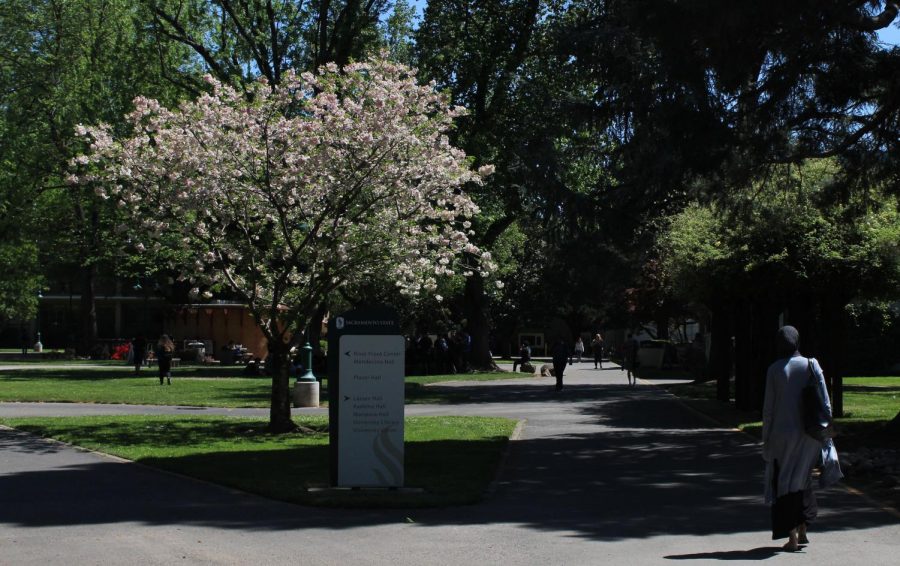Sac State students weigh in on allergy season
Climate change could be making allergy season longer and worsening its effects
Will Coburn – The State Hornet
A Callery Pear on campus at Sac State. These white blooms are a notorious source of allergies all over the city of Sacramento.
May 15, 2019
It is officially allergy season and Sacramento State students have ditched their winter coats and Christmas mugs for picnic baskets and nasal spray.
Students are sneezing into their inner elbows (hopefully) to avoid spreading germs, but the pollen in the air does not discriminate. Students voiced their main concerns about allergies this season.
Sac State junior Amber Emmett-Grant is among many students suffering from seasonal allergies.
“I’m on a diet of Emergen-C and Claritin,” said Grant. “My only concern is people sneezing and not covering their mouths. I deal with allergies around this time every year. I don’t mind my own germs, but I don’t need yours.”
Sophomore Elias Carranza is having a similar experience.
“For some reason the puffy and watery eyes is what most annoys me about allergies. I’d rather have a sore throat than for people to think I’m crying,” Carranza said.
According to the Asthma and Allergy Foundation of America, climate change means earlier and longer allergy seasons. This also affects the pollution in the air, making the air quality worse and especially harmful for those with asthma.
“Having asthma means you’re always at a disadvantage. I wish sneezing was my biggest obstacle. I’m constantly sick this time of year,” said freshman Yulia Rogovtsova. “I had no idea that the climate changing was affecting my asthma and (allergies), but that makes total sense now.”
AAFA reported that warm temperatures cause pollen season to be “11-27 days longer.” These warmer temperatures caused climate change to create “more pollen in the air and stronger airborne allergens.”
“I don’t remember my allergies being this bad when I was a kid and I spent more time outside,” Grant said. “I read something online about global warming making allergy season way worse. Why aren’t more people talking about this?”






















































































































